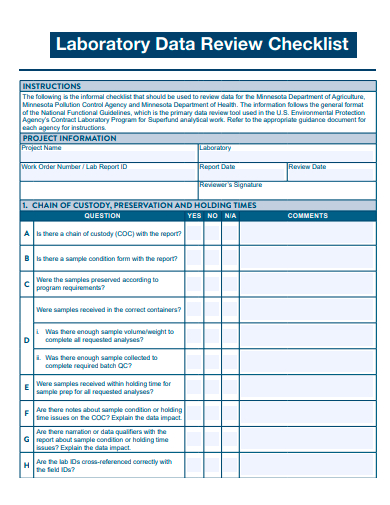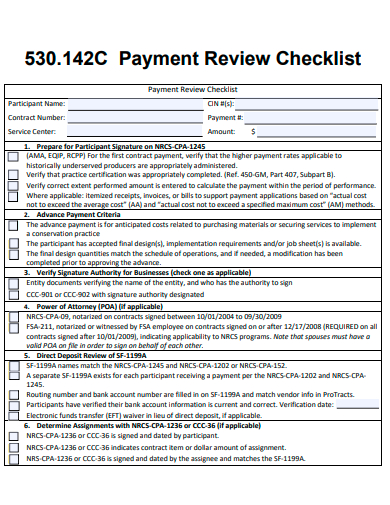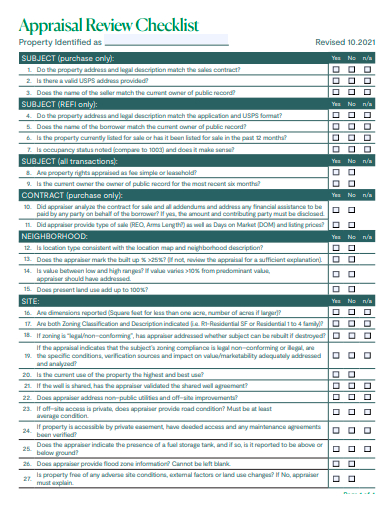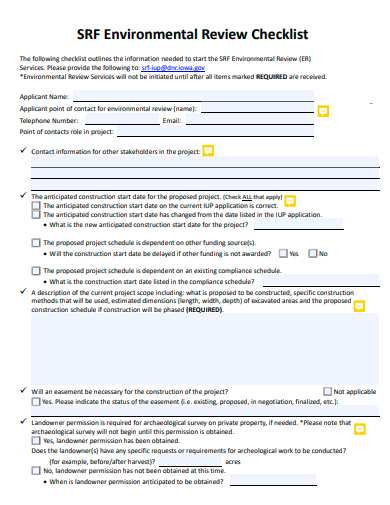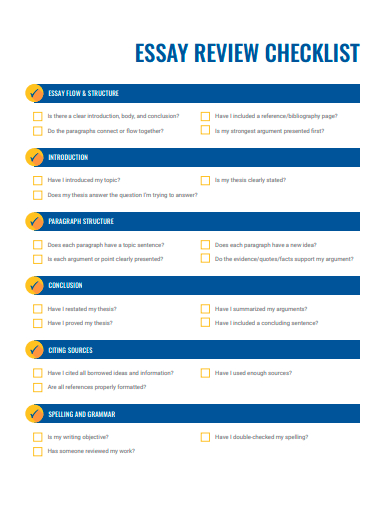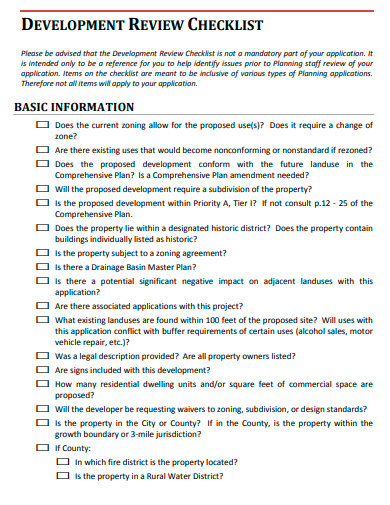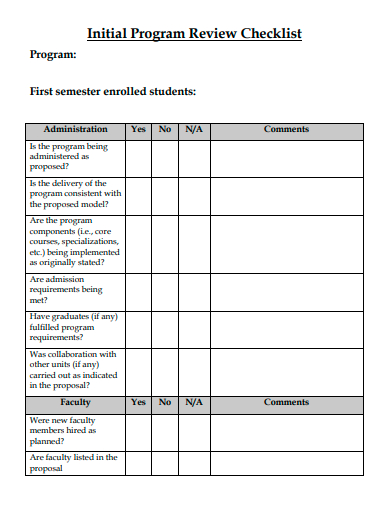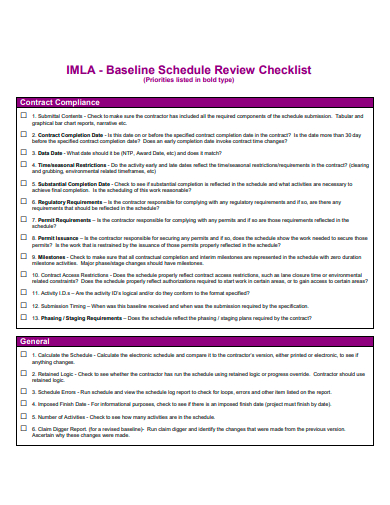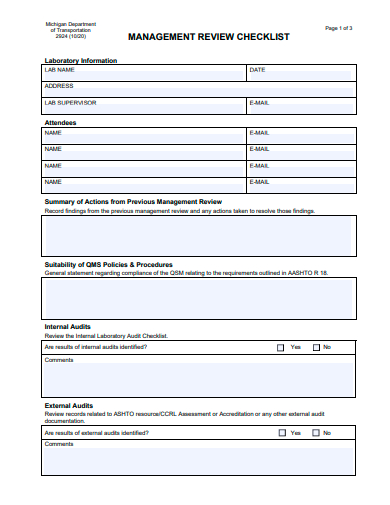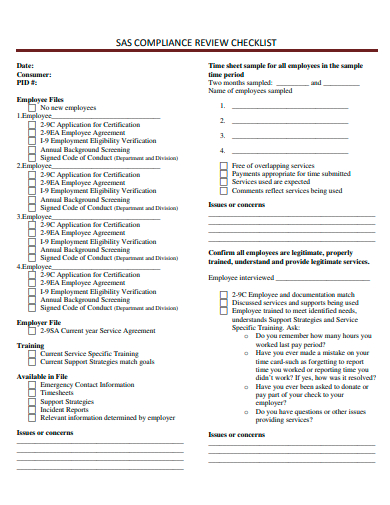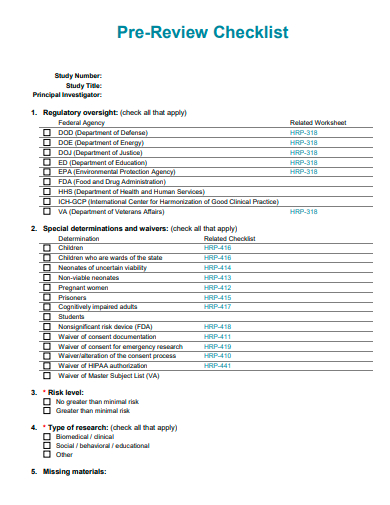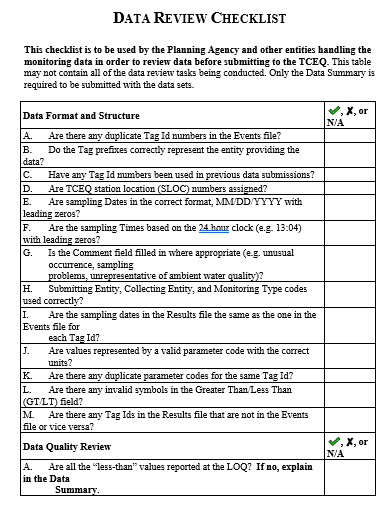In today’s digital age, ensuring quality and accuracy is paramount. Our comprehensive ‘Review Checklist’ serves as a beacon for professionals and enthusiasts alike, streamlining the review process. Packed with essential pointers, this sample checklist ensures that no detail is overlooked. Whether you’re evaluating a product, service, or content piece, our guide will elevate your reviewing standards, providing consistency and precision. Dive in, and empower your evaluations with a structured approach.
18+ Review Checklist Samples
1. Compensation Review Checklist HR Template
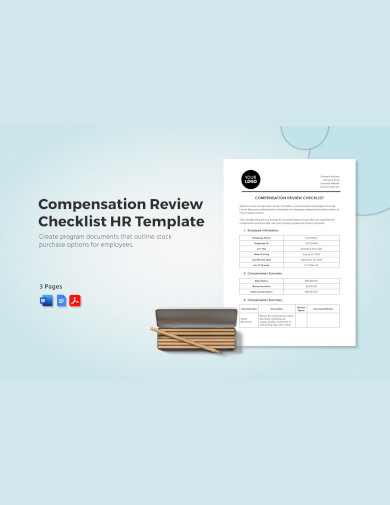
2. Sample Test Plan Review Checklist Template
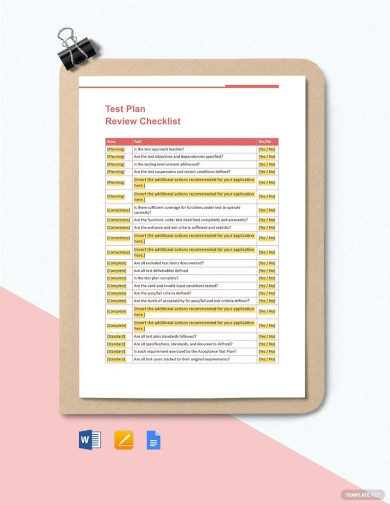
3. Sample Blog Post Review Checklist Template
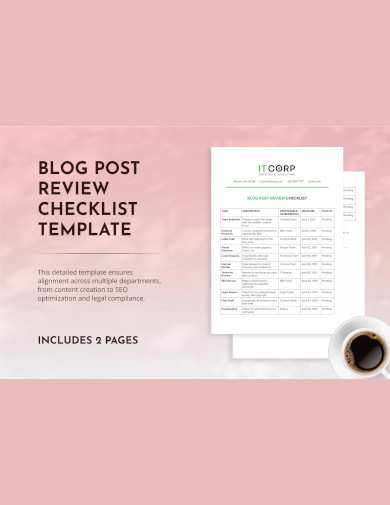
4. Sample Academic Policy Review Checklist Template

5. Sample Elementary Curriculum Review Checklist
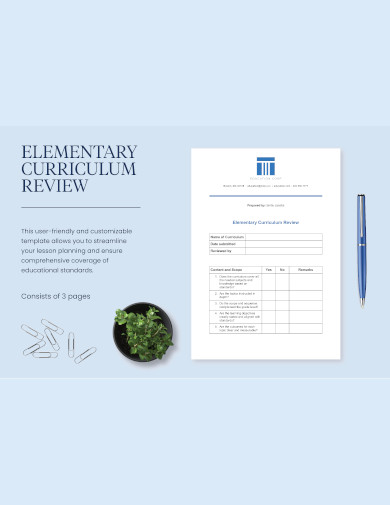
What is a Review Checklist?
Understanding the Review Checklist
In any project, task, or endeavor, ensuring quality and consistency is paramount. A review checklist serves as a tool to facilitate this need. It acts as a structured set of criteria or steps to assess, verify, and ensure that a specific output—be it a product, a document, or any deliverable—meets the required standards and is free from errors.
The Significance of a Review Checklist
Review checklists are crucial for several reasons:
- Ensuring Consistency: Especially in larger projects with many moving parts, maintaining a consistent standard can be challenging. A checklist ensures that every item, document, or task is evaluated using the same criteria, making the review process uniform.
- Reducing Errors: Human memory is fallible. We can easily forget or overlook aspects. A printable checklist acts as a reminder, ensuring that every crucial point is considered and reducing the possibility of missing out on essential details.
- Streamlining Processes: When multiple individuals or teams are involved, clarity in the review process can save significant time and effort. By having a predefined set of standards, all parties involved know what’s expected, leading to smoother collaborations.
Components of an Effective Review Checklist
An effective review checklist typically comprises the following elements:
- Clear Objectives: Every checklist must have a clear goal. Whether it’s ensuring a software code is free from bugs or a content piece is grammatically correct, the objective should guide the items on the sample list.
- Sequential Steps: For tasks that need to be executed in a particular order, the checklist should be sequential. This order ensures that the review process flows smoothly and logically.
- Specificity: Generic checklists can lead to ambiguities. The more specific the points on the checklist, the clearer the guidance for the reviewer. For instance, instead of having an item like “Check grammar,” it’s more helpful to have “Check for subject-verb sample agreement errors.”
- Flexibility: As processes evolve and new insights are gained, the checklist should be adaptable. It should be regularly updated to reflect changes and improve efficiency.
Examples in Real-life Scenarios
- Software Development: Before releasing software, developers often use checklists to ensure code complies with best practices, is optimized, and doesn’t have known bugs.
- Content Creation: Writers and editors may use a checklist to ensure articles meet certain stylistic guidelines, are free from factual errors, and resonate with the intended audience.
- Aircraft Pilots: Before takeoff, pilots run through a pre-flight checklist to ensure that every system on the aircraft is functioning correctly. You can also see more templates like Performance Checklists.
Importance of a Review Checklist
The intricacies of projects, tasks, and operations in today’s dynamic environment demand meticulous attention to detail. Amidst the chaos, a review checklist emerges as an indispensable tool, offering a beacon of clarity. Delving deeper, let’s explore the importance of a review checklist:
- Standardization and Consistency: In varied processes or tasks, maintaining a uniform standard can be challenging. A review checklist ensures that every element, document, or task is evaluated using identical criteria. This consistency ensures that regardless of who conducts the review or when it’s conducted, the outcome remains consistent, promoting uniformity in quality and approach.
- Error Minimization: Oversights are a human trait. A well-structured checklist serves as a cognitive net, catching potential mistakes. By systematically going through the list, reviewers can drastically reduce the chance of missing key details, ensuring that the end result meets the required quality benchmarks.
- Efficiency and Time Management: Time is a resource everyone wishes they had more of. By providing a clear pathway of what needs checking, a review checklist expedites the review process. It eliminates the need to recall or rethink steps, enabling quicker and more efficient reviews.
- Clarity in Communication: Especially in team settings, where multiple individuals may be involved in a review process, a checklist offers clear guidance on expectations. It diminishes ambiguities and provides a reference point, ensuring all team members are on the same page.
- Continuous Improvement: A review checklist isn’t a static document. It’s a living entity that can evolve based on sample feedback, changes in best practices, or shifts in sample objectives. This adaptability means that processes can continually be refined, leading to progressive improvements in outcomes.
- Confidence Boost: Knowing that there’s a structured system in place to catch anomalies gives reviewers and the broader team confidence in the final output. This assurance can be invaluable, especially in high-stakes environments where errors can have significant repercussions.
- Documentation and Accountability: A completed review checklist can serve as a record, evidencing that a task or process has been thoroughly vetted. In scenarios where accountability is essential, this process documentation can be crucial.
Types of Review Checklist
A review checklist, a critical tool used across various domains to ensure quality and consistency, can take several sample forms. The specific type of checklist chosen often depends on the nature of the task, the complexity of the process, and the desired outcome. Here’s an exploration of the different types of review checklists:
Operational Checklists These are used in routine operations to ensure that every step of a process is consistently followed. Examples include daily equipment checks in factories or opening and closing procedures in retail stores.
Compliance Checklists Tailored to ensure adherence to regulations and laws, these checklists are crucial for industries that are subject to regulatory oversight, such as banking, healthcare, and food production.
Quality Assurance Checklists Specifically designed for product development and manufacturing, these checklists ensure that products meet specified quality standards. They can cover everything from raw material checks to final product inspections.
Content Review Checklists Ideal for writers, editors, and content creators, these checklists ensure that content meets editorial standards, is free from errors, and resonates with the intended audience.
Technical Review Checklists Used primarily in fields like software development and engineering, these checklists ensure that technical documents, codes, or designs meet the required technical specifications and best practices.
Safety and Risk Assessment Checklists Employed in sectors like construction, aviation, and chemical industries, these checklists ensure that all safety protocols are observed and potential hazards are assessed and mitigated.
Event Planning Checklists For event managers and coordinators, these checklists ensure that all aspects of an sample event, from logistics to guest lists, are meticulously planned and executed.
Training and Induction Checklists Designed for HR departments and trainers, these checklists ensure that new employees receive consistent training and are familiarized with company policies, procedures, and culture.
Audit and Financial Checklists Crucial for accountants and auditors, these checklists ensure a thorough examination of financial statements, adherence to accounting standards, and compliance with fiscal laws.
Feedback and Evaluation Checklists Used in educational institutions and workplaces, these checklists provide a structured way to evaluate performance, give feedback, and identify areas for improvement.
6. Sample Preliminary Review Checklist Template
7. Sample Laboratory Data Review Checklist Template
8. Sample Payment Review Checklist Template
9. Sample Appraisal Review Checklist Template
10. Sample Environmental Review Checklist Template
11. Sample Chart Review Checklist Template
12. Sample Essay Review Checklist Template
13. Sample Development Review Checklist Template
14. Sample Initial Program Review Checklist Template
15. Sample Schedule Review Checklist Template
16. Sample Management Review Checklist Template
17. Sample Compliance Review Checklist Template
18. Sample Pre-Review Checklist Template
19. Sample Data Review Checklist Template
How do you Create a Review Checklist?
In an ever-evolving digital age, ensuring the quality and accuracy of content, products, or services has become more critical than ever. A review checklist is a powerful tool that can help you maintain consistently high standards. You can also see more templates like Audit Checklist samples. This guide will walk you through the process of creating a robust review checklist in five clear steps.
Step 1: Determine the Purpose of Your Review
Begin by understanding the exact objective behind your review. Are you reviewing a written article for grammar and style? Or perhaps checking a product for quality and functionality? Being clear about the purpose will help you identify the key elements that need attention. For instance, an article review might focus on clarity, coherence, and correctness, while a product review might emphasize functionality, durability, and user-friendliness.
Step 2: List Down All Potential Areas of Review
Once you’ve identified the purpose, brainstorm and list down all potential areas or aspects that need reviewing. For an article, this could include the introduction, body content, conclusion, grammar, and sources cited. For a product, consider its design, functionality, user interface, packaging, and after-sales service. By doing this, you’re ensuring that no stone is left unturned during the review process.
Step 3: Organize Items Sequentially or Thematically
With a list in hand, organize the items in a manner that flows logically. For some, a sequential order might work best, ensuring that the review process follows a step-by-step approach. For others, categorizing items thematically can be more effective. For instance, when reviewing an article, you might first focus on structural elements (introduction, body, conclusion) before moving on to grammar and style.
Step 4: Incorporate Feedback Mechanisms
A checklist is not just about ticking off items; it’s also about gathering feedback for improvement. For each item on your list, include a space for comments or notes. This way, if something doesn’t meet the set standards, the reviewer can provide insights on how it can be improved. If you’re using a digital format, consider incorporating dropdown menus or comment boxes to streamline the feedback process.
Step 5: Test and Refine Your Checklist
Before making your checklist official, test it on a few reviews. This will give you an opportunity to see if anything has been missed or if certain items are redundant. Gather feedback from those using the checklist, as they might offer a fresh perspective on how it can be improved. Remember, the goal is to have a tool that’s both comprehensive and efficient.
What is Code Review Checklist?
A code review checklist is a set of guidelines or criteria used by software developers to systematically review and assess the quality of source code. It ensures that the code meets specific standards, follows best practices, is free from bugs or vulnerabilities, and aligns with the project’s requirements. This checklist aids in maintaining code quality, enhancing collaboration among developers, and ensuring a consistent approach to code evaluation.
Why is Code Review Checklist Important?
A code review checklist is important because it ensures consistency, maintains code quality, identifies potential errors or vulnerabilities early, and facilitates knowledge sharing among developers, leading to better and safer software.
In conclusion, a review checklist is an indispensable tool in ensuring quality, consistency, and efficiency in various processes across diverse domains. By providing a structured approach to reviewing, it minimizes oversights and guarantees that the end product or outcome is of the highest possible standard. You can also see more templates like Appraisal Review Checklist Samples.
Related Posts
FREE 18+ Facilitator Checklist Samples in MS Word | Google Sheets | PDF
FREE 18+ Complaint Checklist Samples in MS Word | Google Sheets | PDF
FREE 18+ Internship Checklist Samples in MS Word | Google Docs | PDF
FREE 18+ Statement Checklist Samples in MS Word | Google Sheets | PDF
FREE 20+ Voluntary Checklist Samples in MS Word | Google Sheets | PDF
FREE 18+ Summary Checklist Samples in MS Word | Google Sheets | PDF
FREE 14+ Sponsorship Checklist Samples in MS Word | MS Excel | PDF
FREE 18+ Conference Checklist Samples in MS Word | Google Sheets | PDF
FREE 17+ Lesson Checklist Samples in MS Word | Google Sheets | PDF
FREE 18+ Progress Checklist Samples in MS Word | Google Docs | PDF
FREE 18+ Enrollment Checklist Samples in MS Word | Google Docs | PDF
FREE 18+ Graduation Checklist Samples in MS Word | Google Sheets | PDF
FREE 15+ Consent Checklist Samples in MS Word | Google Sheets | PDF
FREE 18+ Submission Checklist Samples in MS Word | Google Docs | PDF
FREE 18+ Request Checklist Samples in MS Word | MS Excel | PDF


